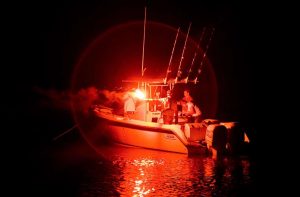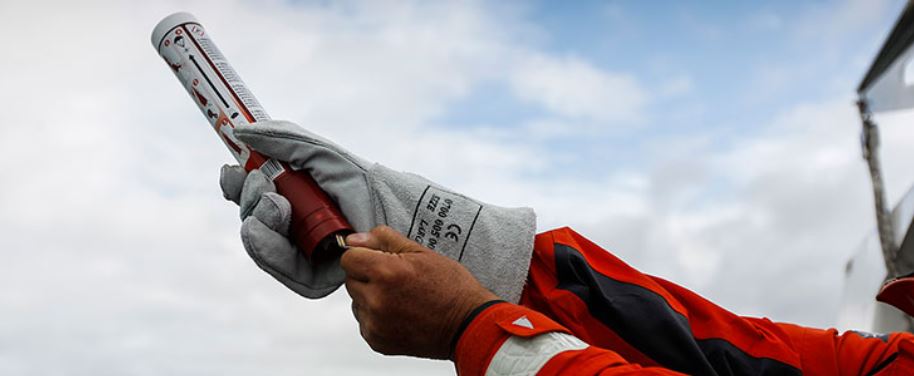Flares

Pyrotechnic distress signals (flares and smoke bombs) can be highly visible.
Pyrotechnic distress signals must be:
- Kept in good condition;
- Within their expiry date;
- Stored vertically in a cool, dry, secure location;
- Stored in a red or orange watertight container marked “DISTRESS SIGNALS”; and
- Safely stored according to the manufacturer’s recommendations.
The number of flares required on a vessel depends on the:
- Length and type of the vessel;
- Its area of operation; and
- The type of equipment onboard.
All approved flares are valid for only four (4) years from their date of manufacture, which is stamped on every flare. All pyrotechnic devices must be approved by Transport Canada.
Consult your local law enforcement agency or a local fire department for advice on the safe disposal of out-of-date pyrotechnic devices; do not throw them overboard.
REMEMBER: Always read and follow all the manufacturer’s instructions before using a pyrotechnic device.
Types of Flares
There are four main types of pyrotechnic devices (Types A, B, C, and D):
- Type A: Rocket Parachute Flare – An aerial flare that, when launched, reaches a height of approximately 300m and then floats down beneath a parachute.
- Type B: Multi-Star Flare – An aerial flare that, when launched, fires two red stars to a height of 100m. They burn for 4 to 5 seconds and are visible from the air or from the surface.
- Type C: Hand Flare – A red-flame torch that can be held in the hand. It has limited visibility and is best used to help rescuers pinpoint your location during an air search.
- Type D: Buoyant or Hand Smoke Signal – A smoke bomb that can be held in the hand or left to float on the water. This type of flare is most effective for daytime use.
Tips on Using Flares
You may use flares only in an emergency when you believe there is a chance of them being seen.
- Aerial Flares – Fire aerial flares at an angle into the wind. In strong wind, lower the angle to 45 degrees, at most.
- Hand-Held Flares – When lighting the flare, hold it clear of the boat and downwind. Do not look directly at the flare while it is burning.

Study Guide
Menu

